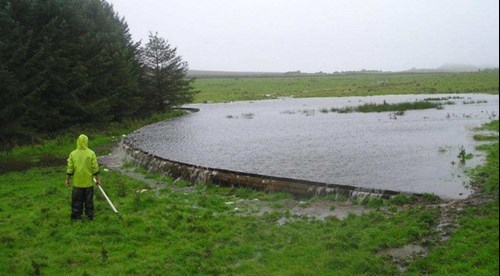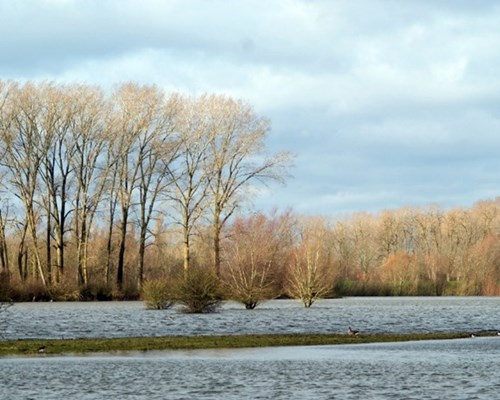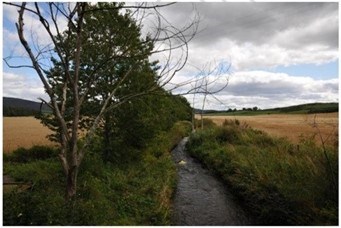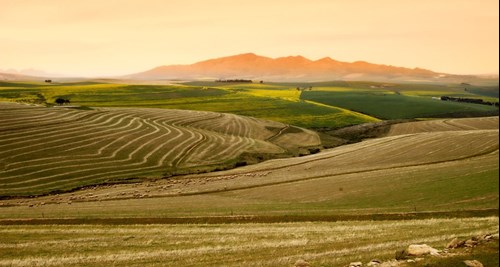Natural flood management plus in the Cadoxton catchment
Background
Periods of heavy rainfall over recent years have highlighted a flooding problem in Dinas Powys. In periods of high rainfall, the river channels, surface water drains and surface water sewers become overwhelmed causing flooding of roads, gardens and homes.
One of our roles is to see what can be done to reduce the risks, especially in the face of climate change, which is likely to increase flood risk as time goes on.
History of flooding
The Cadoxton River and East Brook have a long history of flooding in the villages. Records dating back to 1903 show several instances of flooding, including on St Cadoc’s Avenue, Greenfield Avenue, Elm Grove Place and Cardiff Road.
The last significant flood event was on 23 December 2020. After an intense period of rain, water levels rose rapidly so that that 98 properties were flooded internally. Many other “near-miss” events have occurred when the river has been very high but not caused flooding.
Climate change is causing more extreme weather conditions and putting increased pressure on the existing flood defences, rivers and drainage systems. As our climate continues to change, we will face more frequent storms and heavy rain, which is predicted to result in more frequent, and more significant, flood events. Studies predict that the number of properties at high risk of flooding may double over the next 100 years.
We've explored different flood risk management options. In 2021, we published the Outline Business Case (OBC) focusing on a flood water storage area adjacent to Cwm George, between Casehill Wood and Hales Wood. This option faced significant public opposition due to environmental and social factors such as tree loss. Acknowledging this, we decided not to proceed with this option. Therefore, alternative methods of flood alleviation are now being explored.
Project Overview
We are now exploring options to reduce the risks of flooding to people, property and infrastructure in Eastbrook and Dinas Powys, without adverse effects on communities downstream.
This includes considering the use of nature-based solutions to flood management and small-scale engineering solutions, taking account of previous feedback from consultation with the community.
We have funding from Welsh Government to investigate the viability for Natural Flood Management (NFM) “Plus” works.
What is Natural Flood Management Plus (NFM+)?
Natural Flood Management (NFM) is when natural processes are used to reduce the risk of flooding through restoring bends in rivers, changing the speed water flows in rivers and the way land is managed so soil can absorb more water.
It does not include using traditional flood defence infrastructure such as barriers or dams.
For more information about NFM, visit these links:
- Natural flood management – part of the nation’s flood resilience - GOV.UK (www.gov.uk)
- Natural Resources Wales / Maps for Natural Flood Management
In addition to NFM, there may be additional small-scale engineered solutions which can work alongside natural processes to help address the flooding issues.
Other plusses include the potential for additional local benefits, such as helping to restore and improve habitats, improving water quality and enhancing the wellbeing and health of the local community.
Progress to date
We are working with consultants, Arup, who are undertaking the technical aspects of this study which covers the catchments of the Cadoxton River, the East Brook and their tributaries (Cold Brook, Bullcroft Brook and Wrinstone Brook)
To date, we have undertaken some feasibility assessment and visited the catchments of the study area to understand the types of solutions that might work best.
NFM+ Opportunities in the Cadoxton Catchment
Runoff Attenuation Features
These can reduce peak flows in watercourses by slowing flow overland.

Benefits:
- reduces flood risk
- supports land productivity
- supports specialist invertebrate and plant species
- adapts to climate change
Large woody debris in river channels
This can encourage out-of-bank spill-over and backing-up of flood water.

Benefits:
- improves soil nutrients and condition
- reduces flood risk
- supports land productivity
- improves diversity of river habitat and aquatic biodiversity
- improves channel structure
- improves water quality
- adapts for climate change
Restoration or optimisation of floodplains
This can store large volumes of water to reduce flood risk.

Benefits:
- improves aquatic biodiversity and habitat, water quality, soil nutrients and soil condition
- supports land productivity
- reduces flood risk
- improves channel structure
- adapts to climate change
Increasing tree cover
This intercepts the water on the tree canopy and increases soil’s ability to hold water. Evapotranspiration from mature trees can also be significant.

Benefits:
- slows surface run off
- promotes soil infiltration
- improves soil nutrients and condition
- improves biodiversity
- improves water quality
- adapts to climate change
- mitigates climate change through carbon dioxide absorption and carbon storage
Planting buffer strips
Planting buffer strips adjacent to watercourses, e.g., shrubs/bushes or grass buffers, can slow runoff.

Benefits:
- improves effective water infiltration
- slows surface flows
- improves biodiversity
- improves water quality
- adapts to climate change
- mitigates climate change through carbon dioxide absorption and carbon storage
Contour ploughing
This is a farming practice that involves ploughing / planting across a slope, following its natural contour lines. The ridges help to store runoff and reduce flood risk.

Benefits:
- reduces soil and nutrient losses
- helps conserve water
- reduces flood risk
- improves biodiversity
- improves water quality
- adapts to climate change
Next steps
Working closely with the local community, particularly property and landowners, is key in implementing NFM+ and reducing flood risk.
We are currently meeting with local farmers, landowners, and tenants to explore the opportunities.
We encourage all those with an interest in the project to share their local knowledge, ideas, and concerns.
We will look to work in collaboration with the local community by responding to outstanding queries, considering challenges, and exploring possible NFM opportunities.
Grasshopper Communications has been appointed to support us with all community and stakeholder engagement.
If you wish to give any feedback, please complete this online form by 31 July 2022. We encourage you to leave your contact details so we can get in touch to discuss your feedback further.
To keep up to date on the latest community engagement, please see the ‘Latest News’ section.
Contact details
The team can be contacted via email or phone.
Email: dinas.powys.nfm.plus@grasshopper-comms.co.uk
Phone: 02920 108716
Latest News
We held events with farmers and other landowners in May 2022 to learn about their land, its features and to discuss opportunities for Natural Flood Management Plus (NFM+).
Watch the Natural Flood Management Plus Landowner Webinar - May 2022
